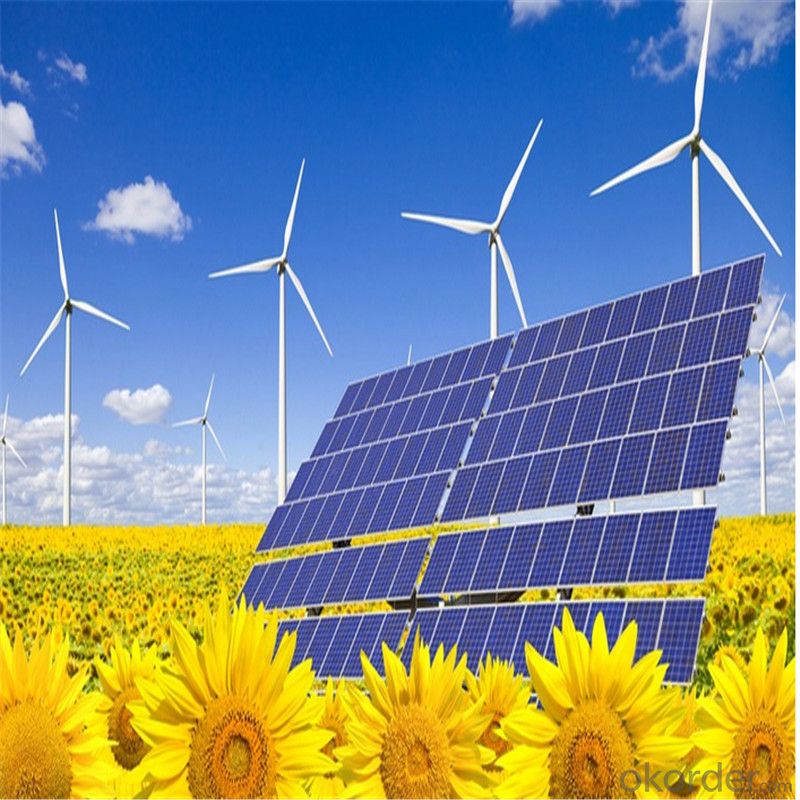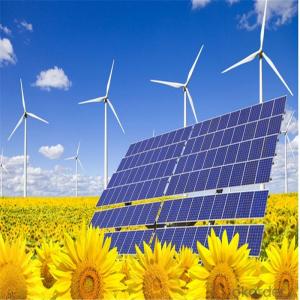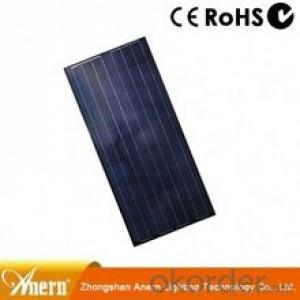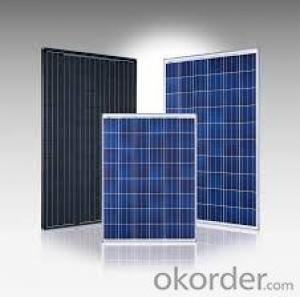225 Watt Photovoltaic Poly Solar Power Photovoltaic Cells
- Loading Port:
- China main port
- Payment Terms:
- TT or LC
- Min Order Qty:
- 1000 watt
- Supply Capability:
- 500000 watt/month
OKorder Service Pledge
OKorder Financial Service
You Might Also Like
Item specifice
Instruction
Quality and Safety
1. Rigorous quality control meets the highest international standards.
2. High-transmissivity low-iron tempered glass, strong aluminium frame.
3. Using UV-resistant silicon.
4. IS09001/14001/CE/TUV/UL
5.3w-300w mono & poly solar panel supply
Warranties
1. 10 years limited product warranty
2. 15 years at 90% of the minimal rated power output
3. 25 years at 80% of the minimal rated power output
Feature
1. High efficiency and High power.
2. Long-term electrical stability.
3. Lowest price and Fastest delivery.
4. Good quality and good service.
5.Bulk supply
6. Good Warranty
7.Big Sale
8.High quality
9.More than 35 years on the lifetime.
10 DHL/Fedex/UPS/TNT/EMS etc
Images


Specification
Model | SIM-100 |
Maximum Power at ST(Pmax)W | 100Wp |
Maximum Power Voltage(Vmp)V | 18.0V |
Maximum Power Current(Imp)A | 5.56A |
Open Circuit Voltage(Voc)V | 22.0V |
Short Circuit Current(Isc)A | 5.9A |
Cell Efficiency(%) | 17.0% |
Module Efficiency(%) | 15.37% |
Operating Temperature°C | -40°C to 85°C |
Maximum system voltage | 1000V(IEC)DC |
Power tolerance | -0.03 |
Temperature coefficients of Pmax | -0.45%/°C |
Temperature coefficients of Voc | -0.27%/°C |
Temperature coefficients of Isc | 0.05%/°C |
Weight(kg) | 7.4 |
Number of cell(pcs) | 4*9 |
FAQ
We have organized several common questions for our clients,may help you sincerely:
1). What’s price per watt?
A: It’s depends on the quantity, delivery date and payment terms of the order. We can talk further about the detail price issue. Our products is high quality with lower price level.
2). Can you tell me the parameter of your solar panels?
We have different series of cells with different power output, both from c-si to a-si. Please take our specification sheet for your reference.
3). How do you pack your products?
We have rich experience on how to pack the panels to make sure the safety on shipment when it arrives at the destination.
4). How long can we receive the product after purchase?
In the purchase of product within three working days, We will arrange the factory delivery as soon as possible. The perfect time of receiving is related to the state and position of customers. Commonly 7 to 10 working days can be served.
Solar Power Photovoltaic cells Cleaning method:
Cleaning steps: 1, observation, analysis 2, washing, brushing 3, over water.
1. Observed and analyzed
Check before cleaning pollution levels to be cleaned panels first. If it is light pollution - no particulate matter, only dust. We recommend rinsing or brushing alone only work on it. This will not only save, save manpower and resources, but also to extend the panel surface to maintain a certain brightness of life. It can increase its life!
2. Washing, brushing
When you need deep cleaning if you find that the surface particulate matter cannot be determined or not. It must first be rinsed, washed away after the scrub particles. Why scrub? Jobs can only flush out dust on the surface of the particulate matter, especially particulate matter. The effect can be said to be perfect. However, for a certain viscosity or pollutants generated due to chemical reaction is not complete. If let it develop over time, it will no longer be cleansed of these pollutants.
3. Over-water cleaning
This step is very important! Do not scrub in order to save after not rinse again. Flushing process will scrub clean down microscopic dust particles and other debris thoroughly washed with water from the panel surface.
Operating and staffing for Solar Power Photovoltaic cells
The general altitude operations (like cleaning the top of the building panels) we press a device with three-man team. Ground staff responsible for operations and support staff houses above hosts. Altitude cleaning operations (must be equipped with personal security) require two people, not only for the safe custody, but also for job rotation, rest. Such cooperation, whether or cleaning equipment utilization efficiency is relatively high; cleaning terrestrial photovoltaic power plants is relatively simple, one or two people can be. It does not impact on productivity.
- Q:What is the role of anti-reflective coatings in solar cells?
- The role of anti-reflective coatings in solar cells is to reduce the amount of light reflection from the surface of the cell, thereby increasing the amount of light that can be absorbed and converted into electricity. This helps to enhance the overall efficiency and performance of the solar cell.
- Q:What is the difference between polysilicon and monocrystalline silicon photovoltaic cells?
- Monocrystalline silicon cells with high battery conversion efficiency, good stability, but the higher cost. Polycrystalline silicon cells are less costly and slightly lower in conversion efficiency than straight-drawn monocrystalline silicon solar cells, with various defects in materials such as grain boundaries, dislocations, microdefections, and impurity carbon and oxygen in materials, as well as tarnished during process Transition metal.
- Q:How do solar cells perform in regions with frequent thunderstorms?
- Solar cells perform less efficiently in regions with frequent thunderstorms. Thunderstorms often bring heavy cloud cover and reduced sunlight, which significantly impacts the generation of solar energy. Additionally, the presence of lightning poses a risk to the solar panels themselves, potentially damaging or destroying them. Therefore, regions with frequent thunderstorms may not be ideal for solar energy production.
- Q:What is a thin-film solar cell?
- A thin-film solar cell is a type of solar cell that is made by depositing one or more thin layers of photovoltaic material onto a substrate, such as glass or plastic. These cells are lightweight, flexible, and can be produced using less material, making them more cost-effective than traditional silicon-based solar cells. However, they typically have a lower efficiency compared to silicon-based cells.
- Q:What is the maximum efficiency that a solar cell can achieve?
- The maximum efficiency that a solar cell can achieve is known as the Shockley-Queisser limit, which is approximately 33.7%.
- Q:How much land is required to install solar cells?
- The amount of land required to install solar cells varies depending on various factors such as the type and efficiency of the solar panels, the amount of electricity desired, and local conditions. On average, it is estimated that 1 megawatt (MW) of solar power requires approximately 5-10 acres of land. However, advancements in solar technology have led to the development of more efficient panels, reducing the land footprint needed for installation. Additionally, innovative approaches like rooftop solar panels can utilize existing structures, minimizing the need for additional land.
- Q:How do solar cells handle snow or ice buildup?
- Solar cells are designed to handle snow or ice buildup by being installed at an angle, which allows for the snow or ice to slide off. Additionally, the dark surface of solar cells tends to absorb sunlight and heat, which can help melt any accumulated snow or ice.
- Q:Can solar cells be used to power refrigeration systems?
- Yes, solar cells can be used to power refrigeration systems. Solar cells convert sunlight into electricity, which can then be used to power various appliances, including refrigeration systems. This is particularly useful in off-grid or remote areas where access to conventional power sources may be limited.
- Q:Can solar cells be used for powering outdoor surveillance systems?
- Yes, solar cells can be used for powering outdoor surveillance systems. Solar cells convert sunlight into electricity, making them a sustainable and reliable power source for outdoor applications. This eliminates the need for traditional power sources and allows surveillance systems to operate in remote or off-grid locations. Additionally, solar-powered surveillance systems can be cost-effective and environmentally friendly, reducing energy consumption and carbon emissions.
- Q:Can solar cells be used in powering remote weather stations?
- Yes, solar cells can be used to power remote weather stations. Solar cells convert sunlight into electricity, making them an ideal and sustainable power source for remote locations where access to traditional power grids may be challenging. The abundance of sunlight in many regions allows solar cells to efficiently generate electricity, providing a reliable source of power for remote weather stations.
1. Manufacturer Overview |
|
|---|---|
| Location | |
| Year Established | |
| Annual Output Value | |
| Main Markets | |
| Company Certifications | |
2. Manufacturer Certificates |
|
|---|---|
| a) Certification Name | |
| Range | |
| Reference | |
| Validity Period | |
3. Manufacturer Capability |
|
|---|---|
| a)Trade Capacity | |
| Nearest Port | |
| Export Percentage | |
| No.of Employees in Trade Department | |
| Language Spoken: | |
| b)Factory Information | |
| Factory Size: | |
| No. of Production Lines | |
| Contract Manufacturing | |
| Product Price Range | |
Send your message to us
225 Watt Photovoltaic Poly Solar Power Photovoltaic Cells
- Loading Port:
- China main port
- Payment Terms:
- TT or LC
- Min Order Qty:
- 1000 watt
- Supply Capability:
- 500000 watt/month
OKorder Service Pledge
OKorder Financial Service
Similar products
New products
Hot products
Hot Searches
Related keywords



























